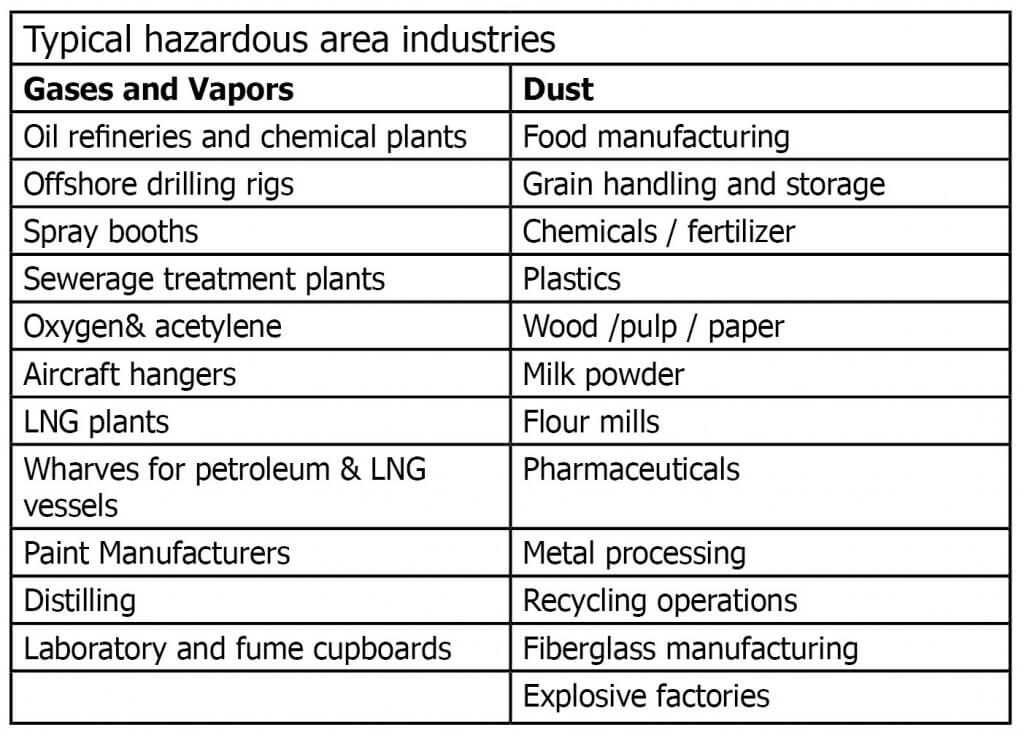What is a Hazardous Area?
In electrical engineering, a hazardous area (also known as a potentially explosive atmosphere) is defined as an environment that consists of any concentrations of flammable gases, vapors, mists or combustible dusts. Where these elements are present, all electrical equipment installed in such environments is specially designed and tested to meet a range of requirements that together ensure the safety of personnel and avoid potentially dangerous situations resulting from the equipment’s reaction to its surroundings.
Situations which involve the processes of production, transformation, delivery and stocking of flammable substances commonly produce potentially explosive environments. Whether the application be chemical and petrochemical plants, mining, oil and gas or food processing and grain handling, when these flammable substances come into contact with the oxygen in the air, they can create an explosive atmosphere. If this atmosphere is ignited, the deriving explosion can provoke serious damage to people and the environment.
Where are Hazardous Areas found?
Common locations of hazardous areas include oil refineries, chemical plans, LNG plants, paint manufacturers, sewerage treatment plants, distilling, wharves and offshore drilling rigs. These are all environments where hazardous gas vapors may be present. However, many companies don’t realize dust can also create hazardous areas, and places such as food and beverage manufacturers, plastics factories, flour mills, recycling operations and grain handling and storage also need to ensure any potential hazardous areas are classified correctly and personnel are trained.
Typical Hazardous Area industries
What Hazardous Areas training is needed?
Without exception, persons who intend to work in hazardous areas need to be appropriately trained and competent. In essence, whether a person is involved in the design, installation or maintenance stage, they must be able to demonstrate competency to ensure utmost safety measures are ensured.
AS/NZS 3000 Clause 7.7.2.4.2 refers to competency requirements in AS/NZS 60079.14. Incase 4.4 requires the design of the installation, the selection of equipment and its installation shall be carried out only by persons whose training has included instruction on the various types of protection and installation practices, relevant rules and regulations and on the general principles of area classification. The competency of the person shall be relevant to the type of work to be undertaken.
As standards, regulations and various technologies advance, it is expected students continue to educate themselves to maintain their competency levels via ongoing refresher training. The competencies required for carrying out work in hazardous areas are outlined in AS/NZS 4761.
We offer hazardous area courses in
- Installation and Maintenance of Electrical Equipment in Hazardous Areas
- Hazardous Areas Classification and Design and
- Hazardous Area Awareness (for non-electrical participants)
To find out more, contact us!





